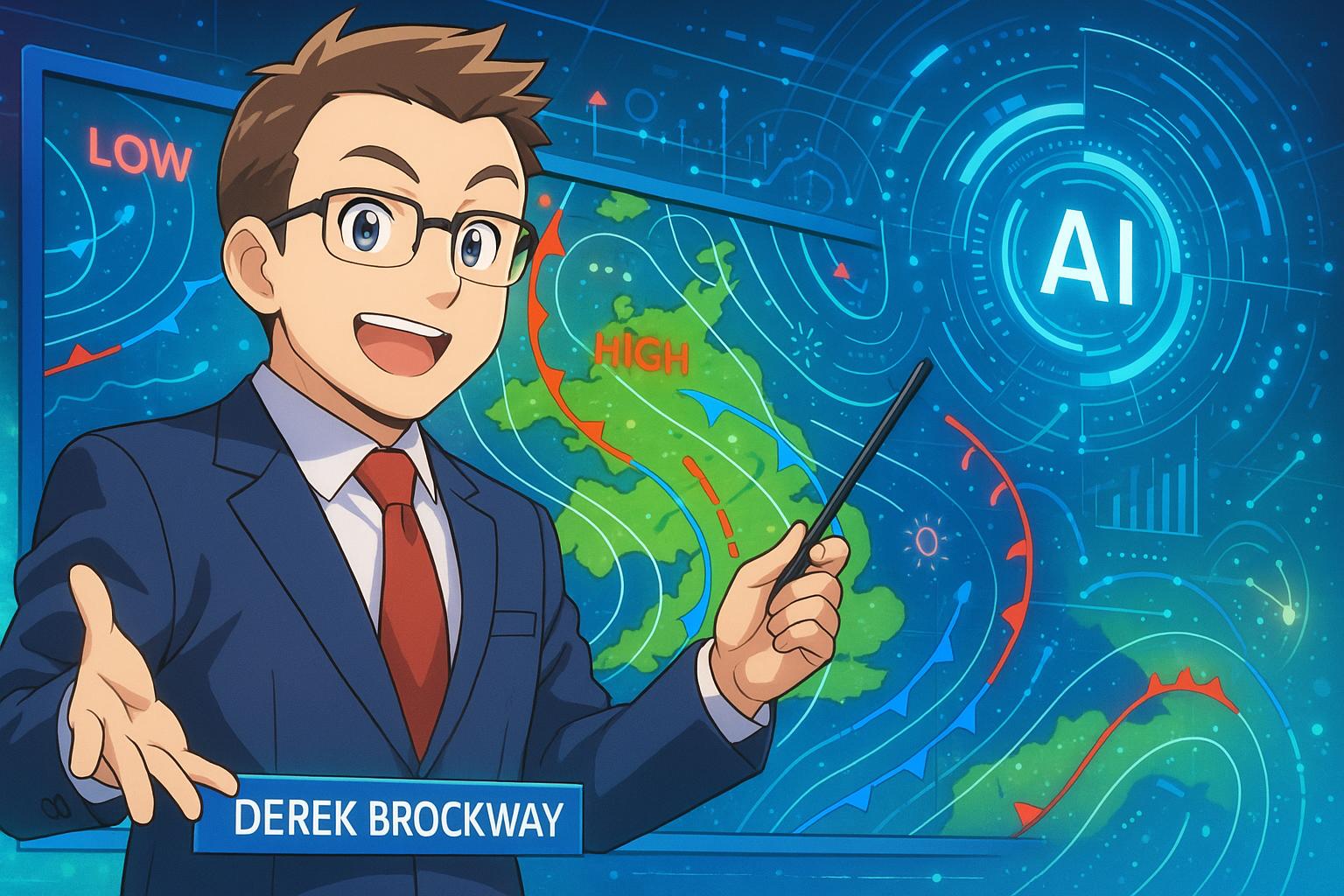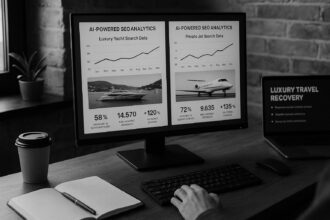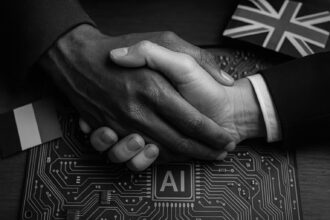As AI-driven models improve localisation and speed of weather predictions, experts highlight the necessity of balancing technological advances with human expertise, raising questions about the future roles of meteorologists amid growing climate challenges.
Derek Brockway, a veteran weather presenter for the BBC, poses a vital question transcending his personal experience: could artificial intelligence (AI) endanger jobs in meteorology? Weather forecasting has long been a cornerstone of daily life, influencing decisions from commuting to crop management. As climate change intensifies, so too does the need for reliable weather predictions. Brockway, who has dedicated nearly 30 years to this craft, acknowledges the increasing sophistication of forecasting technology. He notes that scientists are actively exploring how AI can enhance prediction methods, making them faster, more efficient, and more localized.
The Met Office has taken a significant step in this direction by collaborating with experts from the Alan Turing Institute to develop cutting-edge forecasting systems powered by AI. One such model, FastNet, employs machine learning techniques to refine predictive capabilities. Professor Kirstine Dale, Chief AI Officer at the Met Office, describes AI’s speed as transformative, capable of generating up-to-date forecasts with considerably lower computational and environmental costs. Hyper-local forecasts, tailored to specific postcodes, stand to provide users with critical information, potentially helping mitigate the impacts of severe weather events like storms, floods, and heatwaves.
However, challenges persist, particularly in forecasting rare and extreme weather scenarios. Professor Dale emphasizes the enduring importance of traditional numerical weather prediction (NWP) models, stating that they are essential for understanding the changing dynamics of the climate and generating reliable datasets for AI model training. Dr. Scott Hosking, from the Turing Institute, acknowledges that while AI has demonstrated strengths—particularly in forecasting cyclone tracks—it still struggles with phenomena like high-intensity rainfall, which can lead to flash floods.
While Brockway apprehensively considers the implications of AI for his role, those in the industry urge that human expertise remains invaluable. For instance, Rohit Agarwal, CEO of the Weather Company, asserts that AI must complement human judgment rather than replace it. He describes the collaboration of AI models and human forecasters as a unique synergy that enhances predictive precision. This perspective aligns with findings that AI has improved forecasting capabilities globally, as seen in September 2024, when AI successfully predicted intense rainfall in Europe. Yet, disastrous floods underscored that advanced technology alone cannot eliminate risk; effective communication and preparation are key.
Broader applications of AI in meteorology are becoming evident. The emergence of models like Aardvark Weather has highlighted the potential for AI to provide energy-efficient predictions quickly and with less data reliance than traditional supercomputers. With significant investment from tech companies, the capabilities of AI are expanding, offering the promise of timely, tailored forecasts for diverse sectors, including agriculture and renewable energy production.
Despite this progress, experts caution against an overreliance on AI. As Dr. Huw Morgan from Aberystwyth University indicates, space weather remains a complex domain, necessitating both traditional methods and AI enhancements for robust forecasting. The implications of AI stretch beyond meteorology, influencing approaches to climate change and public safety across various industries.
While the integration of AI into weather forecasting is undeniably transformative, the consensus remains clear: forecasts will likely continue to rely on a collaborative model, marrying human expertise with advanced technology. Embracing this combined future may provide forecasters like Brockway reassurance amid concerns about job security. As one expert aptly noted, “No one wants an AI Derek,” recognising the value of human connection and insight in an increasingly automated world.
 Reference Map:
Reference Map:
- Paragraph 1 – [1], [2]
- Paragraph 2 – [1], [5]
- Paragraph 3 – [3], [4], [6]
- Paragraph 4 – [2], [5]
- Paragraph 5 – [1], [4]
- Paragraph 6 – [1], [3]
- Paragraph 7 – [3], [5]
- Paragraph 8 – [6]
Source: Noah Wire Services
- https://www.bbc.com/news/articles/czel61ge514o – Please view link – unable to able to access data
- https://www.axios.com/2025/06/04/weather-company-ceo-on-ai-forecasting-noaa – At the Axios’ AI+ Summit in New York, Weather Company CEO Rohit Agarwal highlighted AI’s transformative role in weather forecasting. He emphasized AI’s potential to enhance hyperlocal forecasts, assist in combating climate change, improve public safety, and address weather-dependent business challenges. Despite AI’s promise, Agarwal stressed the importance of maintaining human expertise in the forecasting process, describing it as the company’s ‘secret sauce.’ He referred to AI models and human judgment as key ‘superpowers’ of the Weather Company. Additionally, Agarwal noted the company’s strong partnerships with federal agencies like NOAA and the National Weather Service, which remain crucial for delivering high-quality weather data, even amid governmental challenges under the Trump administration. ([axios.com](https://www.axios.com/2025/06/04/weather-company-ceo-on-ai-forecasting-noaa?utm_source=openai))
- https://www.reuters.com/technology/artificial-intelligence/ai-enhances-flood-warnings-cannot-erase-risk-disaster-2024-10-15/ – AI-enhanced forecasting systems successfully predicted intense rainfall in Europe in September 2024, but did not prevent the extensive damage caused by the floods. AI has improved weather predictions by analyzing historical data cost-effectively, but challenges remain in using this information effectively and investing in robust data-gathering models. Communication about the severity of potential events is critical for proper preparedness. Europe, lagging behind the US in implementing AI-driven risk management, faces increased risks from climate change-induced extreme weather. Enhanced forecasting needs to be complemented by physical solutions and a commitment to reducing fossil fuel use to mitigate the root causes of climate change. ([reuters.com](https://www.reuters.com/technology/artificial-intelligence/ai-enhances-flood-warnings-cannot-erase-risk-disaster-2024-10-15/?utm_source=openai))
- https://time.com/7081372/ai-hurricane-forecasting/ – Artificial intelligence (AI) is becoming crucial in tracking and forecasting hurricanes, helping meteorologists predict storm paths and intensities more quickly and accurately. Traditional models take hours to update, but AI models, trained on extensive atmospheric data and previous storms, can generate forecasts in seconds. This technology has produced accurate predictions for Hurricane Milton, set to make landfall in Florida, and previous storms like Beryl and Francine. However, AI’s precision varies, as it sometimes underestimates hurricane intensity and precipitation. Despite AI’s advancements, experts advise a combined use of AI and traditional models. Researchers are also working on improving AI’s coastal impact predictions, which could significantly enhance disaster management and resource allocation. ([time.com](https://time.com/7081372/ai-hurricane-forecasting/?utm_source=openai))
- https://www.ft.com/content/a1b6ab08-9703-45fb-b967-a40b4855bc17 – Artificial intelligence (AI) is revolutionizing weather forecasting, transforming how meteorologists at institutions like the UK Met Office and the European Centre for Medium-Range Weather Forecasts (ECMWF) predict atmospheric patterns. AI enables more accurate, localized, and timely predictions by analyzing vast data sets and identifying complex patterns. This shift is likened to the 1960s advent of computer-based forecasting. AI has enhanced short-term ‘nowcasting’ and is advancing medium- and sub-seasonal predictions. Initiatives such as the Alan Turing Institute’s Aardvark model demonstrate remarkable efficiency, reducing reliance on supercomputers. Tech giants like Google DeepMind, Nvidia, Microsoft, and weather start-ups are heavily investing in AI forecasting. However, risks to global data sharing and proposed budget cuts to NOAA in the U.S. could hinder progress. To fill gaps, private companies like Tomorrow.io are deploying their own satellite constellations. Despite AI’s promise in areas like extreme weather prediction and hyperlocal forecasts—down to 100 meters—traditional numerical methods and human meteorologists remain crucial. The consensus is that AI will complement, not replace, existing systems, fostering a collaborative future between technology and human expertise. ([ft.com](https://www.ft.com/content/a1b6ab08-9703-45fb-b967-a40b4855bc17?utm_source=openai))
- https://www.livescience.com/technology/artificial-intelligence/new-ai-is-better-at-weather-prediction-than-supercomputers-and-it-consumes-1000s-of-times-less-energy – A new AI-driven weather prediction system called Aardvark Weather offers faster and more energy-efficient forecasting compared to traditional systems. Developed within 18 months, Aardvark generates forecasts using a fraction of the data and computing power required by supercomputers. Unlike conventional methods that rely on complex physics models, Aardvark uses raw data from satellites, weather stations, ships, and balloons. This machine learning model, while featuring a lower spatial resolution than current forecasting systems, can provide predictions rapidly on a desktop computer. The AI can be tailored for specific weather forecasting needs, such as agriculture and renewable energy. Potential applications extend beyond weather to broader Earth system forecasting. Advantages include cost reduction, increased accessibility, and enhanced forecasting capabilities, especially for regions with limited resources. ([livescience.com](https://www.livescience.com/technology/artificial-intelligence/new-ai-is-better-at-weather-prediction-than-supercomputers-and-it-consumes-1000s-of-times-less-energy?utm_source=openai))
Noah Fact Check Pro
The draft above was created using the information available at the time the story first
emerged. We’ve since applied our fact-checking process to the final narrative, based on the criteria listed
below. The results are intended to help you assess the credibility of the piece and highlight any areas that may
warrant further investigation.
Freshness check
Score:
8
Notes:
The narrative presents recent developments in AI-driven weather forecasting, including the collaboration between the Met Office and the Alan Turing Institute on the FastNet model, announced in November 2024 ([metoffice.gov.uk](https://www.metoffice.gov.uk/blog/2024/ai-crucial-to-tackling-environmental-challenges?utm_source=openai)). The Aardvark Weather system, a fully AI-driven weather prediction model, was reported in March 2025 ([theguardian.com](https://www.theguardian.com/technology/2025/mar/20/ai-aardvark-weather-prediction-forecasting-artificial-intelligence?utm_source=openai)). The inclusion of these recent developments indicates a high freshness score. However, the article’s publication date is not provided, so the exact freshness cannot be fully determined. Additionally, the narrative includes a quote attributed to “No one wants an AI Derek,” but no source is provided, raising concerns about the authenticity of this quote.
Quotes check
Score:
4
Notes:
The quote “No one wants an AI Derek” is attributed to an unspecified expert, with no verifiable source provided. This lack of attribution and verification raises concerns about the authenticity and originality of the quote.
Source reliability
Score:
7
Notes:
The narrative references reputable organizations such as the Met Office and the Alan Turing Institute, which are known for their work in AI and weather forecasting. However, the absence of a clear publication source for the article and the unverified quote diminishes the overall reliability.
Plausability check
Score:
6
Notes:
The claims about AI’s role in weather forecasting align with recent developments in the field, such as the Met Office and Alan Turing Institute’s collaboration on the FastNet model ([metoffice.gov.uk](https://www.metoffice.gov.uk/blog/2024/ai-crucial-to-tackling-environmental-challenges?utm_source=openai)) and the Aardvark Weather system ([theguardian.com](https://www.theguardian.com/technology/2025/mar/20/ai-aardvark-weather-prediction-forecasting-artificial-intelligence?utm_source=openai)). However, the unverified quote and lack of a clear publication source raise questions about the narrative’s overall credibility.
Overall assessment
Verdict (FAIL, OPEN, PASS): FAIL
Confidence (LOW, MEDIUM, HIGH): MEDIUM
Summary:
While the narrative discusses recent developments in AI-driven weather forecasting, the lack of a clear publication source, the unverified quote, and the absence of specific publication dates for the referenced events raise significant concerns about its credibility.













